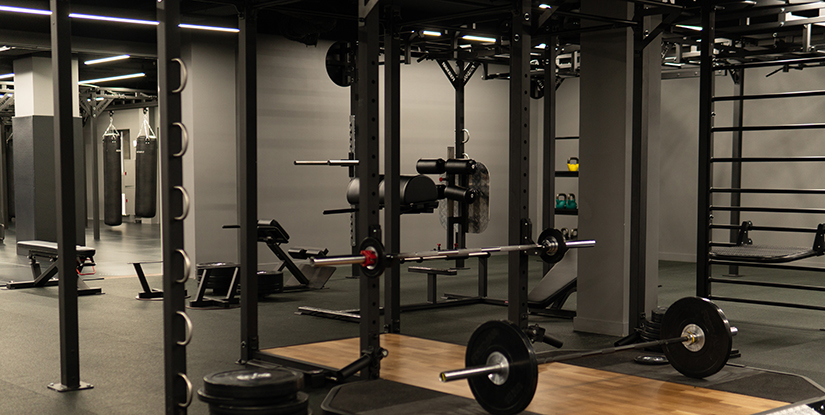Professional Fitness Equipment: Selection, Maintenance & Safety Guide

Overview of Professional Fitness Equipment
Professional fitness equipment is engineered for durability, performance, and user safety in commercial and high-use environments. Unlike consumer-grade gear, professional units prioritize serviceability, consistent biomechanics, and robust warranties to support gyms, training studios, corporate wellness centers, and rehabilitation clinics.
Key Categories
- Cardio Machines: Treadmills, ellipticals, stationary bikes, and rowers designed for sustained daily operation and advanced monitoring.
- Strength Equipment: Plate-loaded machines, selectorized resistance, power racks, and multi-stations for scalable strength programming.
- Free Weights & Accessories: Olympic bars, bumper plates, kettlebells, and functional training tools built to withstand repeated impact.
- Functional & Group Training: Rig systems, sleds, plyometric boxes, and suspension trainers optimized for varied programming and group classes.
- Specialty & Rehab: Isokinetic devices, physical therapy tables, and adjustable rehab equipment with fine-grain resistance control.
Selection Criteria for Facilities
Selecting the right equipment begins with needs analysis and space assessment. Consider user demographics, peak traffic, programming goals, and budget lifecycle costs. Prioritize equipment with modular parts, field-replaceable components, and scalable features that support evolving programming.
- Durability: Check frame gauge, weld quality, and corrosion-resistant finishes.
- Ergonomics: Ensure adjustability for a broad range of body types and clear movement paths.
- Serviceability: Verify local service networks and availability of replacement parts.
- Technology: Evaluate integrated consoles, connectivity, and software ecosystems for member engagement and maintenance tracking.
Maintenance and Asset Management
Effective preventive maintenance extends equipment life and reduces downtime. Implement a documented schedule that includes daily inspections, monthly lubrication and tension checks, and annual professional servicing.
- Daily: Visual inspections for wear, loose fasteners, and hygiene checks.
- Monthly: Inspect belts, chains, cables, and moving parts; adjust tensions and replace consumables.
- Quarterly/Annual: Full mechanical inspection, console firmware updates, and safety lock tests.
- Recordkeeping: Maintain a service log and parts inventory to streamline repairs.
Space Planning & Installation
Optimal layout maximizes throughput and safety. Allocate clear walkways, designated warm-up and stretching zones, and consider acoustic and flooring requirements. Professional installation ensures warranty compliance and correct calibration.
- Clearance: Maintain recommended safety zones around moving equipment.
- Flooring: Use impact-absorbing, non-slip surfaces with adequate load-bearing capacity.
- Electrical & HVAC: Confirm power requirements and ventilation to support high-intensity use.
Cost Considerations & Lifecycle Value
Total cost of ownership (TCO) should guide procurement. Evaluate initial purchase price alongside expected lifespan, service contracts, downtime costs, and residual value. Investing in higher-quality units often reduces long-term operational expenses.
Safety, Compliance & Member Experience
Adhere to industry standards and local regulations for fire, electrical, and accessibility compliance. Train staff on emergency procedures and equipment-specific safety protocols. Enhance member experience with clear signage, accessible instructions, and intuitive equipment interfaces.
Brand Selection & Procurement Strategies
Select vendors with proven commercial track records and transparent warranty policies. Consider financing, bulk procurement discounts, and bundled service agreements. Pilot testing equipment can provide insight into real-world performance before full-scale purchase.
Warranty, Support & End-of-Life Management
Warranties should cover structural, mechanical, and electronic components with clear terms for labor and parts. Plan end-of-life strategies: refurbishment, resale, or responsible recycling to minimize environmental impact.
Implementation Checklist
- Conduct needs assessment and traffic projections.
- Create a space plan with safety clearances and electrical requirements.
- Specify equipment by durability, ergonomics, and serviceability.
- Secure installation and verify warranty activation.
- Implement preventive maintenance and staff training programs.
FAQs
- Q1: How is commercial equipment different from home equipment? A: Commercial gear is built for continuous, heavy use with stronger frames and serviceable parts.
- Q2: What is the typical warranty for pro equipment? A: Warranties vary; common terms are 5–10 years for frames and 1–3 years for electronics and wear parts.
- Q3: How often should maintenance occur? A: Daily visual checks, monthly adjustments, and annual professional inspections.
- Q4: Is financing advisable for gyms? A: Yes; financing preserves cash flow and can include service packages.
- Q5: Which brands are trusted in commercial settings? A: Look for established manufacturers with service networks and proven commercial references.
- Q6: How to plan for space and layout? A: Use traffic analyses and allow safety clearances per manufacturer guidelines.
- Q7: Can pro equipment be used in home gyms? A: Yes, but consider space, noise, and power requirements.
- Q8: What role does technology play? A: Tech enhances engagement, tracking, and preventive maintenance via diagnostics.
- Q9: How to manage retired equipment? A: Explore refurbishment, resale, or certified recycling to minimize waste.

